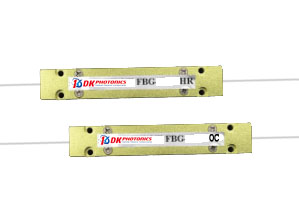
Fiber lasers are ubiquitous in today’s environment. They are frequently used in industrial settings to carry out cutting, marking, welding, cleaning, texturing, drilling, and much more due to the various wavelengths they can produce. They are also employed in other industries, like telecommunications and medical.
Fiber lasers transmit light along an optical fiber cable consisting of silica glass. Due to its straighter and smaller shape compared to other types of lasers, the resulting laser beam is more precise. Additionally, they feature a compact design, outstanding electrical efficiency, require little maintenance, and have cheap operating expenses.
What Are the Different Types of Fiber Lasers?
In general, the following attributes can be used to classify fiber lasers:
- Laser Source:
The substance that the laser source is combined with determines the characteristics of a fiber laser. Due to the fact that each of these laser types produces a different wavelength, they are all used for various applications.
- Mode of Operation:
Different laser designs emit laser beams in various ways. When using “q-switched,” “gain-switched,” or “mode-locked” lasers, high-peak powers can be achieved by pulsing laser beams at a predetermined repetition rate. Alternatively, they might convey the same amount of energy continuously if they were continuous (continuous-wave fiber lasers).
- Laser Power
The average power of the laser beam is measured in watts or laser power. Compared to low-power lasers, high-power lasers produce more energy more quickly.
- Mode:
The model describes the size of the optical fiber’s core, which is where light travels. Single-mode fiber lasers and multi-mode fiber lasers are the two different kinds of modes. Single-mode lasers typically transmit laser light more effectively and produce superior beams.
The Benefits of Fiber Lasers
Fiber lasers have advanced significantly and now offer a number of intriguing advantages as a result of the diligent effort of numerous academic and commercial researchers and engineers.
Convenience:
In general, fiber lasers are more compact than conventional lasers of comparable power, and the fact that the laser is housed in a flexible fiber makes beam distribution easier.
- High power:
Having the gain medium dispersed across a wide area has two implications. First of all, you can get a lot of amplification, and secondly, since there is so much usable surface, dispersing heat is not a problem.
- Consistent beam quality:
When heat and vibration are present in the environment, fiber lasers still create and deliver high-quality beams.
What Is the Lifespan of a Fiber Laser?
According to many online sources, CO2 lasers only last 30,000 hours while fiber lasers last 100,000 hours. These figures pertain to a quantity known as “mean time between failures” (MTBF), which varies depending on the specific fiber laser in question. For various fiber laser types, you will actually see different numbers.
The MTBF calculates a laser’s dependability by stating the anticipated number of hours of operation before a failure. It is calculated by testing several laser units, adding up the results, and dividing the result by the total number of failures.
This value gives you a good indication of the fiber laser’s dependability even though it cannot precisely tell you how long it can operate.
How Do Fiber Lasers Operate?
Pump light for fiber lasers comes from so-called laser diodes. The light that is sent into the fiber-optic cable is emitted by these diodes. The subsequent step involves creating and amplifying a certain wavelength using optical components. The final step is to shape and release the generated laser beam.
Step 1: The Laser Diodes Produce Light
Step 2: The Fiber-Optic Cable Guides the Pump Light
Step 3: The Laser Cavity Amplifies Light
Step 4: Produce Laser Light with a Specific Wavelength
Step 5: Shape and Release of the Laser Beam
DKphotonic offers a comprehensive range of laser power measurement solutions for various laser types, including fiber lasers.